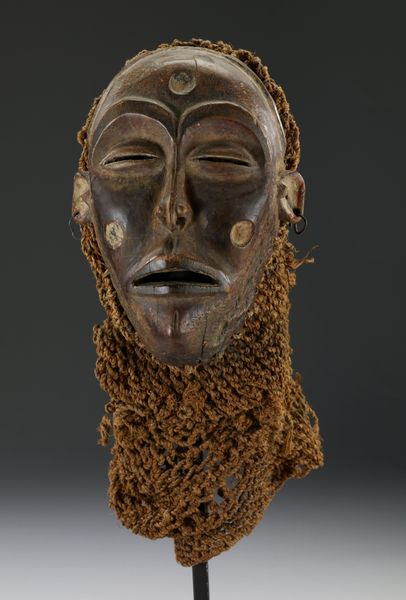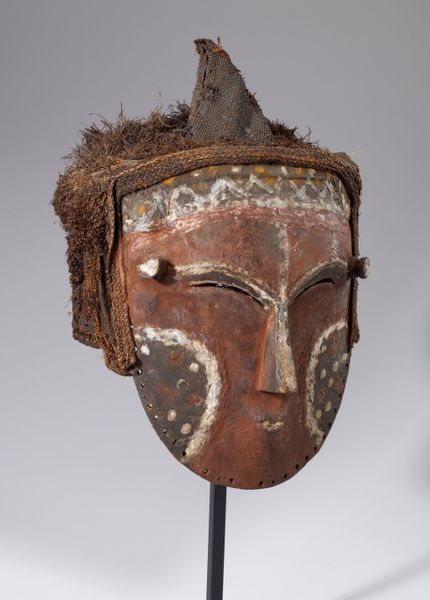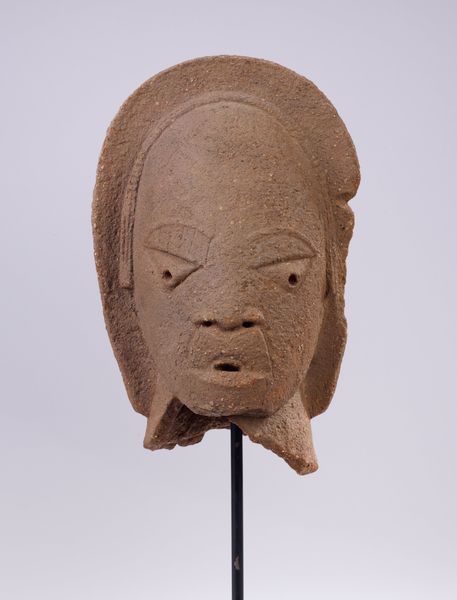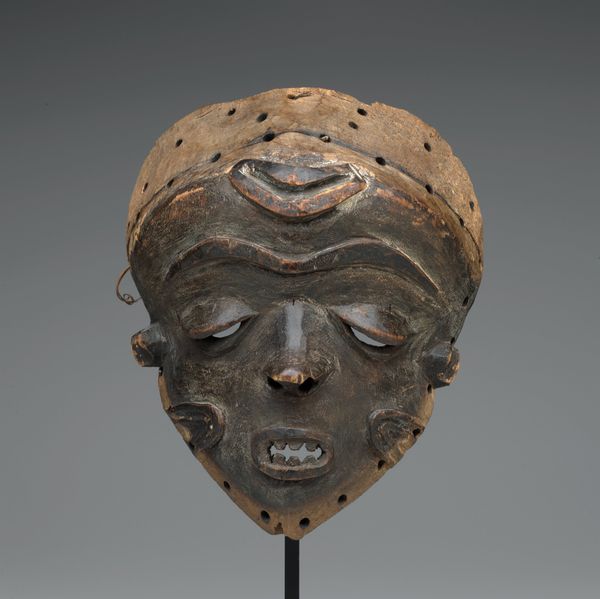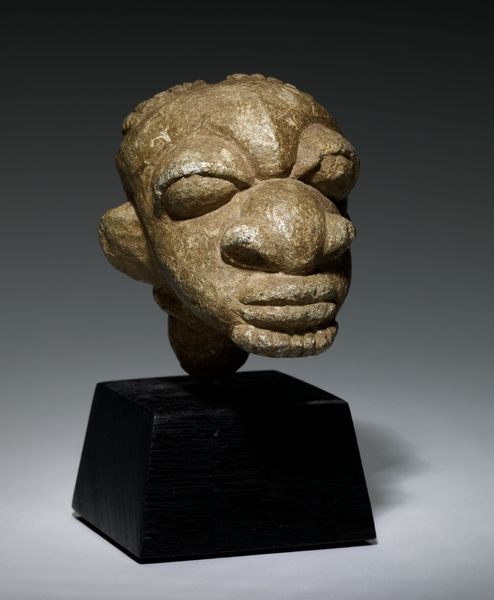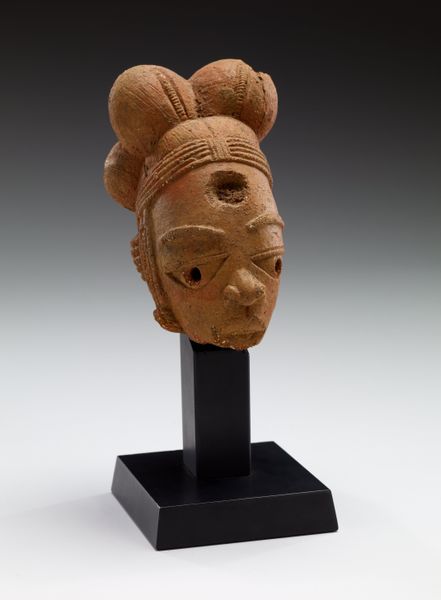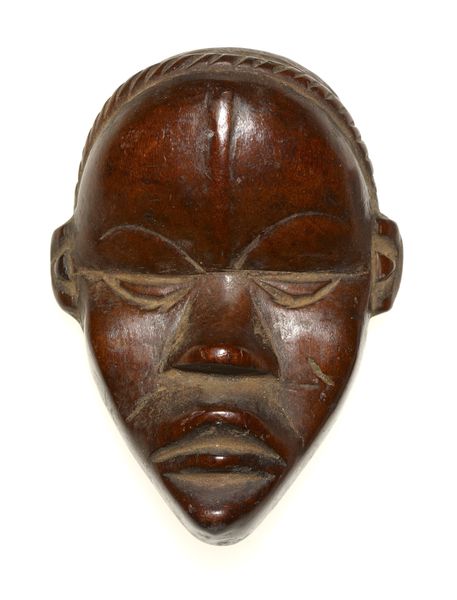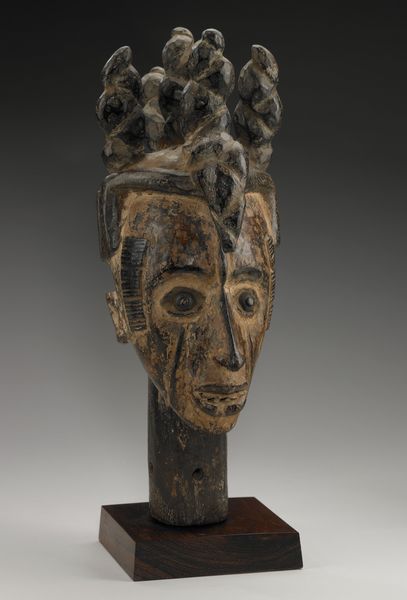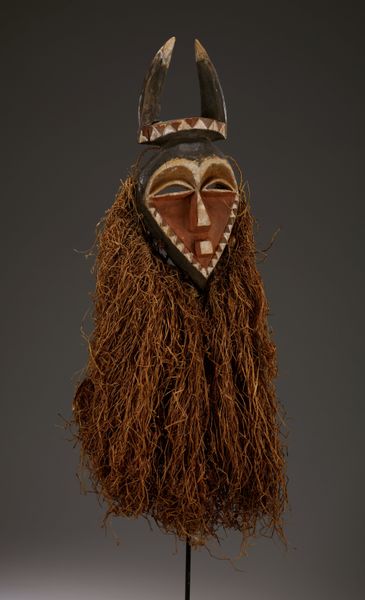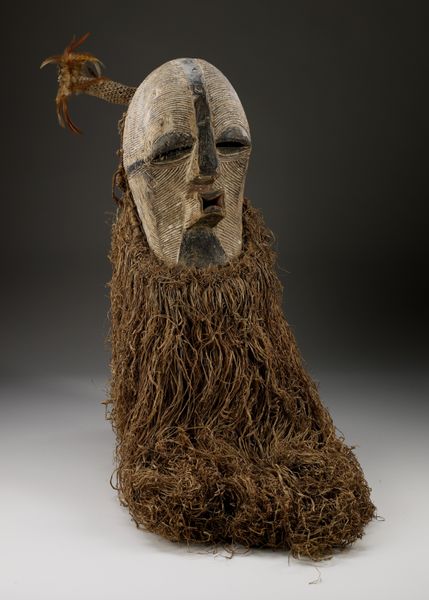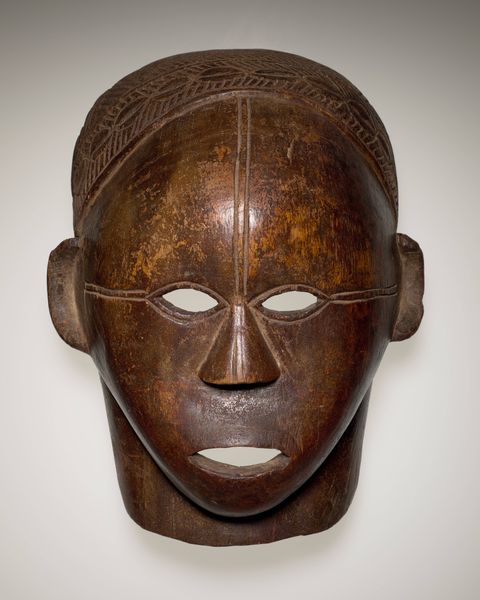
carving, sculpture, wood
#
portrait
#
african-art
#
carving
#
sculpture
#
figuration
#
sculpture
#
wood
Dimensions: 10 1/2 x 10 1/2 in. (26.67 x 26.67 cm) (headdress)
Copyright: Public Domain
Editor: Here we have a Chokwe Mask, dating from 1920 to 1930, crafted from wood. It's currently housed here at the Minneapolis Institute of Art. The expression feels very serene and regal. How do you interpret this work, especially considering its cultural context? Curator: This mask is indeed powerful. Knowing it’s Chokwe, from a society in Central Africa, we must consider it within the context of performance and societal roles. Often, these masks weren't just static objects but were activated through dance and ritual. Consider the gaze, which you describe as serene. Is it serene, or is it perhaps more about embodying an idealized representation of womanhood, a specific character celebrated in coming-of-age ceremonies? Editor: I hadn't thought of that. So the serenity could be more about conveying a specific role or ideal. The headdress looks heavy; does that have significance too? Curator: Absolutely. The headdress contributes to the mask's overall impact and likely denotes status. The details, the textures… it all communicates meaning within the Chokwe belief system. These performances reinforce social structures, teaching values and historical narratives to the community. How does considering its original purpose change your perception? Editor: It makes it feel less like an object and more like a living part of something bigger – a cultural performance. It changes everything. I feel that masks invite conversations around identity, race, and how we portray others. I wonder what this mask represents within the wider discourse of art and cultural exchange. Curator: Precisely. And it urges us to continuously unpack our own assumptions when we encounter art from different cultures, doesn’t it? Recognizing how power and representation intersect within these objects is crucial for ethical engagement. Editor: Definitely. It’s important to learn the story the piece wants to tell, rather than projecting our own narratives onto it. Thanks for shedding light on the cultural significance! Curator: My pleasure! I’m also constantly learning new things about these types of art; isn't that why they are timeless?
Comments
minneapolisinstituteofart almost 2 years ago
⋮
Known as pwo (woman) or mwana pwo (young woman), this type of mask is worn by men whose outfits include breasts carved in wood and fastened to their netted costume. The masks evoke female ancestors, who are responsible for guarding the community’s fertility. They are represented as beautiful women with balanced features, filed teeth, and delicate scarifications on their cheeks and forehead. This example includes an elaborate hairstyle, consisting of hundreds of strands and knots, embellished with red camwood powder.
Join the conversation
Join millions of artists and users on Artera today and experience the ultimate creative platform.
